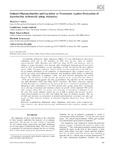
Please use this identifier to cite or link to this item:
http://ricaxcan.uaz.edu.mx/jspui/handle/20.500.11845/570Full metadata record
| DC Field | Value | Language |
|---|---|---|
| dc.contributor | 76919 | es_ES |
| dc.coverage.spatial | Global | es_ES |
| dc.creator | Santos, Mauricio | - |
| dc.creator | Araujo Andrade, Cuauhtémoc | - |
| dc.creator | Esparza Ibarra, Edgar León | - |
| dc.creator | Tymczyszyn, Elizabeth | - |
| dc.creator | Gómez Zavaglia, Andrea | - |
| dc.date.accessioned | 2018-06-18T19:02:44Z | - |
| dc.date.available | 2018-06-18T19:02:44Z | - |
| dc.date.issued | 2014 | - |
| dc.identifier | info:eu-repo/semantics/publishedVersion | es_ES |
| dc.identifier.issn | 1520-6033 | es_ES |
| dc.identifier.uri | http://hdl.handle.net/20.500.11845/570 | - |
| dc.description.abstract | Lactobacillus delbrueckii subsp. bulgaricus CIDCA 333 was dehydrated on desiccators containing silica gel in the presence of 20% w/w of two types of galactooligosaccharides (GOS Biotempo and GOS Cup Oligo H-70VR ) and lactulose, until no changes in water desorption were detected. After rehydration, bacterial growth was monitored at 37 C by determining: (a) the absorbance at 600 nm and (b) the near infrared spectra (NIR). Principal component analysis (PCA) was then performed on the NIR spectra of samples dehydrated in all conditions. A multiparametric flow cytometry assay was carried out using carboxyfluorescein diacetate and propidium iodide probes to determine the relative composition of damaged, viable, and dead bacteria throughout the growth kinetics. The absorbance at 600 nm and the position of the second derivative band at 1370 nm were plotted against the time of incubation. The efficiency of the protectants was GOS Biotempo>GOS Cup Oligo H-70VR >lactulose. The better protectant capacity of GOS Biotempo was explained on the basis of the lower contribution of damaged cells immediately after rehydration (t50). PCA showed three groups along PC1, corresponding to the lag, exponential and stationary phases of growth, which explained 99% of the total variance. Along PC2, two groups were observed, corresponding to damaged or viable cells. The results obtained support the use of NIR to monitor the recovery of desiccated microorganisms in real time and without the need of chemical reagents. The use of GOS and lactulose as protectants in dehydration/rehydration processes was also supported. | es_ES |
| dc.language.iso | eng | es_ES |
| dc.publisher | Wiley | es_ES |
| dc.relation.uri | generalPublic | es_ES |
| dc.rights | Atribución-NoComercial-CompartirIgual 3.0 Estados Unidos de América | * |
| dc.rights.uri | http://creativecommons.org/licenses/by-nc-sa/3.0/us/ | * |
| dc.source | Biotechnology Progress, Vol. 30, Núm, 5. 2014. | es_ES |
| dc.subject.classification | BIOLOGIA Y QUIMICA [2] | es_ES |
| dc.subject.other | Lactobacillus delbrueckii subsp | es_ES |
| dc.subject.other | bulgaricus | es_ES |
| dc.subject.other | desiccation | es_ES |
| dc.subject.other | galacto-oligosaccharides | es_ES |
| dc.subject.other | lactulose | es_ES |
| dc.subject.other | near infrared spectroscopy | es_ES |
| dc.subject.other | multiparametric flow cytometry | es_ES |
| dc.subject.other | damage | es_ES |
| dc.subject.other | cells | es_ES |
| dc.title | Galacto-Oligosaccharides and Lactulose as Protectants Against Desiccation of Lactobacillus delbrueckii subsp. bulcaricus | es_ES |
| dc.type | info:eu-repo/semantics/article | es_ES |
| Appears in Collections: | *Documentos Académicos*-- UA Ciencias Biológicas | |
Files in This Item:
| File | Description | Size | Format | |
|---|---|---|---|---|
| 2014 Revista Biotechnology Progres.pdf | 266,54 kB | Adobe PDF |  View/Open |
This item is licensed under a Creative Commons License
